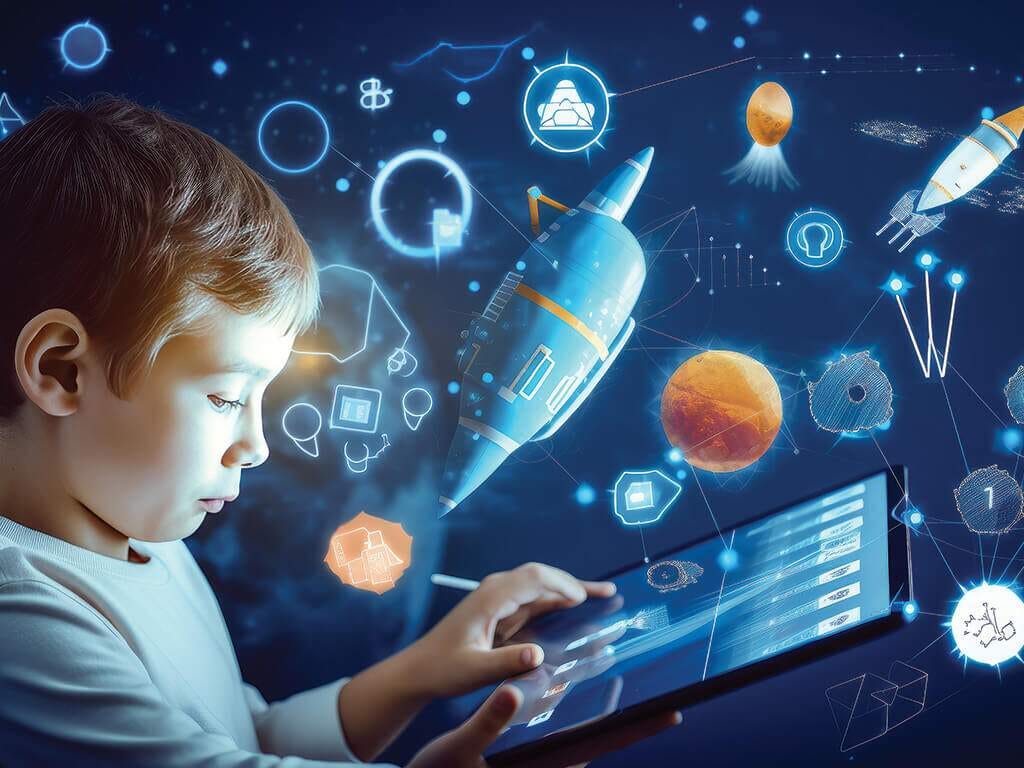Artificial Intelligence in 2025: A Complete Educational Guide
Artificial Intelligence in 2025: A Complete Educational Guide
Artificial Intelligence (AI) is one of the most significant technological developments of the 21st century. In 2025, AI is no longer considered futuristic—it has become a practical tool influencing education, business, science, healthcare, transportation, and everyday life. This article takes an **educative and informative** approach to explain the foundations of AI, its history, applications, benefits, challenges, and ethical considerations, while also exploring its future potential.
1. What is Artificial Intelligence?
Artificial Intelligence refers to the ability of machines to perform tasks that typically require human intelligence. These include recognizing patterns, understanding natural language, solving problems, making decisions, and even learning from data. AI is built on several scientific fields such as computer science, mathematics, linguistics, psychology, and neuroscience.
Key Characteristics of AI
- Learning from experience (Machine Learning).
- Understanding human language (Natural Language Processing).
- Problem-solving and decision-making.
- Vision and perception (Computer Vision).
- Adaptability through feedback.
2. Historical Background of AI
The concept of intelligent machines is not new. Philosophers and mathematicians have debated artificial reasoning for centuries. However, the scientific study of AI began in the mid-20th century.
a) Early Foundations
In the 1940s and 1950s, pioneers such as Alan Turing and John von Neumann laid the groundwork. Turing’s famous question, “Can machines think?”, inspired generations of researchers. The Turing Test remains a key benchmark for measuring machine intelligence.
b) The Birth of AI as a Field
The term “Artificial Intelligence” was first used in 1956 at the Dartmouth Conference, where researchers envisioned creating machines that could reason, learn, and problem-solve. This event is often considered the birth of AI as a discipline.
c) Winters and Renewed Growth
AI research faced setbacks known as “AI winters” due to lack of funding and slow progress. However, advances in computing power, availability of big data, and improvements in algorithms in the 2000s led to renewed interest. By the 2020s, AI became widely applied in industries such as healthcare, finance, marketing, and education.
3. Core Branches of AI
AI is a broad field with multiple sub-disciplines. Key branches include:
- Machine Learning (ML): Systems learn from data without explicit programming.
- Deep Learning: Advanced ML that uses neural networks to mimic the human brain.
- Natural Language Processing (NLP): Enables machines to understand and respond to human language.
- Computer Vision: Allows machines to recognize and interpret visual information.
- Robotics: Integration of AI with machines to perform tasks in the physical world.
- Expert Systems: Programs designed to mimic decision-making of human experts.
4. Applications of AI in 2025
AI applications are vast and diverse. In 2025, AI is embedded into many aspects of daily life and professional practice.
a) AI in Education
AI supports personalized learning. Adaptive platforms adjust content based on student strengths and weaknesses. Automated grading, AI tutoring systems, and intelligent content recommendation are widely used.
b) AI in Healthcare
Doctors use AI for diagnosis, medical imaging analysis, and drug discovery. Predictive algorithms identify potential health risks early, while wearable devices powered by AI monitor patient health in real time.
c) AI in Business
Businesses employ AI to analyze data, forecast trends, and improve decision-making. Customer service chatbots, automated supply chain systems, and AI-driven marketing are standard in 2025.
d) AI in Transportation
AI contributes to self-driving cars, smart traffic management, and logistics optimization. Autonomous vehicles are being tested and integrated in urban areas globally.
e) AI in Science and Research
Scientists use AI to process large datasets, simulate experiments, and accelerate discoveries in fields such as climate change, genetics, and physics.
5. Benefits of AI
AI provides multiple educational, social, and economic benefits:
- Efficiency in repetitive and time-consuming tasks.
- Enhanced accuracy in decision-making.
- Cost reduction for organizations and industries.
- 24/7 availability in services such as chatbots and healthcare monitoring.
- Improved personalization in education, e-commerce, and entertainment.
6. Challenges and Concerns of AI
While AI is powerful, it presents challenges that require critical attention.
- Job Displacement: Automation may replace human jobs, leading to unemployment if reskilling is ignored.
- Bias and Fairness: AI models may reproduce social biases present in data.
- Data Privacy: Use of personal data raises ethical and security concerns.
- Dependence: Overreliance on AI may reduce human critical thinking.
- Environmental Costs: Training large AI models consumes significant energy.
7. Ethical Considerations in AI
The growth of AI raises questions about responsibility, accountability, and fairness. Key ethical principles include:
- Transparency in how AI systems make decisions.
- Accountability of developers and organizations.
- Equity to ensure AI benefits all groups fairly.
- Respect for privacy and personal data protection.
8. The Future of AI Beyond 2025
The future of AI points to even greater integration in society. Researchers predict advancements in general AI—systems that can perform any intellectual task a human can do. AI will likely revolutionize sectors such as:
- Agriculture: Precision farming and crop monitoring.
- Energy: Smart grids and renewable energy optimization.
- Education: Virtual classrooms with AI-driven personalized teaching.
- Healthcare: Genetic research and AI-designed treatments.
- Space Exploration: Autonomous robots for planetary missions.
9. Conclusion
Artificial Intelligence has transitioned from theory to reality. By 2025, it touches nearly every aspect of life, offering opportunities and challenges alike. For students, researchers, and professionals, AI is both a subject to study and a tool to apply. Understanding AI’s foundations, applications, benefits, and limitations allows society to use it responsibly for progress while addressing its risks. The story of AI is not just about technology—it is about how humanity chooses to shape and coexist with intelligent machines.





Comments